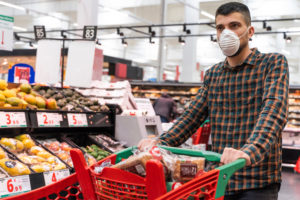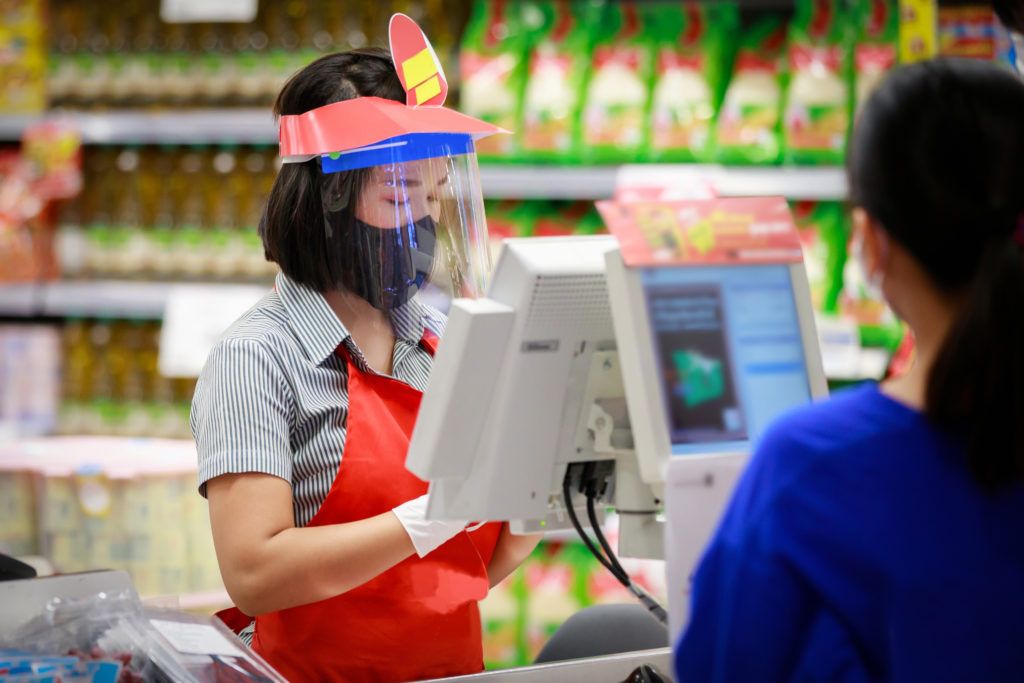No One Saw It Coming
Without warning, the Coronavirus swept across the world driving individuals into their homes as social di
We recently conducted dedicated research to gather the perspectives on how retailers and suppliers are being impacted and are adapting in key markets around the world: China, Brazil, Italy, Spain, Portugal and the UK. We have also collected detailed feedback from the remainder of our 40 markets. Their stories explore the tensions brought about by the crisis and the need for collaboration to solve them. They also address how retailers and suppliers continue to adapt as the crisis rocks the rank and file and pressures them to future-proof their businesses without certainty of what the ‘future’ looks like. Indeed, the future holds more questions than answers, but reflecting on these questions and planning for the potential scenarios will put us in a better place going forward.
Over the past several months, collaboration has been a fundamental pre-requisite for all suppliers and retailers. In fact, the need for collaboration, along with an understanding and empathy for the needs of others, are overwhelmingly noted as the most influential aspects of supplier-retailer relationships during the pandemic.
Adapting in Crisis Puts a Lens on Partnerships
The need to partner in support of the same end goal, getting consumers the products they need to survive, has strengthened cooperation between retailers and suppliers. Simply put, the crisis has led to a greater appreciation and understanding of the challenges that the other side faces in the retailer-supplier business partnership. Collaborative relationships built on mutual trust have accelerated and reached new levels of intimacy while adversarial relationships have rapidly shifted into partnerships as both parties gained a real sense of “we are in this together”.
Retailers and suppliers around the world share the ways that they have raised collaboration to unparalleled heights: constant communication, sharing and transparency, working for win-win outcomes, focusing on problem solving and compromise, and being empathetic to each other’s needs. While other tactical adaptations reflect the stage of crisis and other market realities, these encompass the basics tenants that got us through to our present reality, and that will continue to yield efficiencies and results as economies normalize.
- Constant Communication: Daily or real-time communications took the place of more structured and planned conversations, and phone or virtual meetings often replaced or supported written communications. Adapted mediums i.e. voice connections (phone or virtual meetings) often supplanted written communications to ensure clarity of message as there was no scope for misunderstandings and no time to waste. Real-time communications have also helped retailers and suppliers exchange ideas with agility, reaching decisions with greater speed and efficiency. Alternatives to conventional communication tools such as messaging apps accelerated to make oneself readily available or more responsive as problems or issues developed.
“The COVID-19 crisis and hoarding have put enormous pressure on the entire chain. In these times it is nice to see how cooperation is strengthened by ‘over-communicating’, to be able to help each other where possible and to ensure that the Dutch shops remain stocked. This has certainly intensified the relationship with retail.” – Netherlands Supplier
- Sharing and Transparency: Real-time sharing of data and category insight, coupled with full transparency and visibility to the supply chain have been critical to ensure rapid adaptability on all fronts and to create trust between retailers and suppliers, strengthening partnerships in a time when retailers must partner with whomever they can trust to get them what they need. Sharing updates openly and honestly became critical as retailers needed to understand lead-times with an unprecedented level of transparency. Although it is not always easy to deliver difficult news or even a message of uncertainty, this is mutually beneficial compared to avoiding the conversation or withholding information. Retailers, for the most part, have demonstrated an understanding of the challenges suppliers are facing but have not tolerated being led astray.
“They have given us insight as to what they are doing about the challenges because they are at operational capacity. Having the transparency there helps us understand what we should be supporting them with, and what we should be moving away from.” – UK E-commerce Supplier
- Working Together for ‘Win-Win’ Outcomes: Retailers and Suppliers are partnering where the need is the greatest – supply chain. Examples include suppliers and retailers of closed industries stocking shelves for essential service retailers, which is also helping keep more people employed whilst serving the common good. Suppliers have switched production to support the demand for products like masks and hand-sanitizer (e.g. the beer and spirit companies have shone with this contribution as have many other companies).
“Cooperation with retailers has even improved on some fronts because there is a common interest: getting as many products on the shop floor as possible. In addition, we have tried to support the retailers as much as possible by deploying our field staff on the shop floor to replenish shelves (not only for our category, but also for ‘hoarding products’). We also came across with the field service at retailers where we normally should not enter. There is a lot of contact with each other, really a lot. In addition, we set up an exclusive activation with a single retailer to support the catering industry. The same applies in the area of supply chain. Communication is key and this was rock solid from both retail and ourselves.” – Netherlands Supplier
- Focus on Problem Solving and Compromise: A necessary outcome of the crisis has been that retailers and suppliers have had to focus on problem-solving and be ready to resolve issues. This has required putting aside their agendas and reaching a compromise to make decisions and execute under pressure in the tightest timelines imaginable. This has brought a new emphasis for working towards creative solutions, rapid ideation and a real demonstration of “fail fast” innovation in processes. As an example, upgraded category insight capability has grown out of the need for enhanced processes for acquiring feedback and turning around requirements in real-time (e.g. greater ‘watching’ of social media platforms, etc.).
“A positive aspect is that we cooperate more closely in the logistics field than before and that we both better understand each other’s difficulties (e.g. out-of-stocks) and thus come up with creative solutions for which we can subsequently evaluate the results.” – Belgium Supplier
- Empathy to Understand Each Other’s Needs: No one wins in a time of crisis, and retailers and suppliers cannot afford to carry over some of the legacy business practices, such as making zero-sum demands or working toward a one-sided outcome. Retailers and suppliers have had to be flexible and understanding of one another’s needs and capabilities. It is not “business as usual,” so in some cases, this required a break from the usual ways of doing business, which may set a pathway towards stronger collaboration in the future. When business partners demonstrate a desire to listen, learn and collaborate, win-win outcomes can be created without all the process and stress of negotiation. Supply chain flexibility and adaptability have been the predominant requirement with suppliers looking at all sourcing and delivery options with retailers to supply where it is needed most. Suppliers have been appreciative of retailers who have withdrawn standard penalties for delivery and promotions non-compliance.
“… The current landscape between retailer and supplier is transforming into a more collaborative one where the two sides are willing to work together to review a marketing campaign or new counter measures, and jointly operate. This epidemic is at a tipping point. In the process of solving problems together, the supplier and the retailer will collide with more ideas. During this period, the two sides have further strengthened communication. This epidemic is like a catalyst, making the supplier and the retailer develop closer relations.” – Chinese Retailer
The outcome of the crisis is what we are seeing evolve in real–time and what showcases the industry’s ability to respond to a crisis. The industry established capacity and capability for new ways of working with agility and efficiency and in many cases doing “better with less” i.e. fewer people, less time and less information. It continues to be a credit to the industry how well suppliers and retailers have each and collectively managed through this COVID-19 crisis – for the most part a shining example of how collaboration can make an impact for good – keeping economies, societies and households functioning during a time when much activity has come to a standstill.
All things are not equal however, and as in all realities, it cannot be said that all retailers and suppliers have adopted or adapted the above practices as well as others, and certainly some have evolved their capabilities and competencies faster than others. Those that already had a collaborative business model in place found it easier to adapt and dial-up existing practices and ways of working, but for others it meant a shift in mindset and culture which resulted in these companies lagging behind. Some reported their business partners lacked clarity and had unrealistic expectations and were unreceptive to listening and working together.
“We notice that despite the tension and pressure on all sides being greater than ever, the cooperation between supplier and retailer takes place in a more intensive and transparent manner. We notice enormous solidarity, all with the same goal in mind: to ensure that the consumer can do his shopping as well as possible” – Netherlands Retailer
Questions to Frame Future-Planning
Many of the capabilities and ‘new ways’ of working that retailers and suppliers have implemented over the past several months will persist after the crisis subsides as they have uncovered learnings to apply on an on-going basis. The lesson of collaboration is one that continues to build across all markets as more and more news sheds light on partnerships, co-creation with competitors, and collective support to essential organizations and the wider public.
As we enter the next phase of the pandemic, retailers and suppliers will brace for the long-term and begin to future-plan. In doing so, they will need to foster cooperative ways of working for the betterment of their respective and collective success. While no one knows precisely how it will look, the following questions may help in compassing the path beyond the pandemic:
How well will companies develop contingency and crisis planning as not only a luxury, value added business competency but as a key requirement?
Businesses must document their learnings from this crisis and form crisis teams and processes. While tempting, suppliers and retailers should not move straight into future planning post-crisis without learning from this experience. If it were to ever happen again, we should be faster and even more efficient in our response.
Will virtual ways of working translate into the new way of business engagement? What decisions will companies make about office spaces and travel budgets going forward?
Virtual ways of working in many cases have saved time and money and facilitated swifter decisions to get more done. While offices will re-open and in-person meetings will slowly resume – the Industry has realized that a lot more can be done remotely. Nonetheless caution may be warranted as these have not been normal times, people have been focused on keeping their jobs and without the temptations that can distract focus, will a work from home model work as well once the crisis subsides?
There is a growing argument that “Simpler is Better”. Could the paradigm shift for the long-term?
Over time has the industry let assortment and promotions get overly and unnecessarily complicated? Category assortment may come under the microscope on a long-term basis as Retailers have seen that they can serve the needs of their shoppers with a more concentrated offering. This would challenge suppliers to be more efficient in their new product development plans to fulfill unmet needs versus offering more choice for existing products.
Many category, product and promotional plans were put on hold during the crisis. Will these still be ‘relevant’ in the ‘new normal’?
Everything is up for review, we cannot just assume that it will even make sense to follow-through on plans that were in place before the crisis hit, for the reasons above and more. What do consumers want and expect right now, what products and messages will hold the greatest appeal, and will any be inappropriate in the ‘new normal’?
How will Governments, Suppliers and Retailers react to the new business models that were borne out of necessity?
For example, suppliers have had to experiment with ways to bypass retailers and get products into consumers’ homes during the crisis and in some cases, governments have loosed regulations on sale of products like alcohol allowing new routes to market. Can retailers and suppliers find ways to collaborate to support the merging lines (and in some cases competitive nature) of one another’s business models?
Will the examples of the open mind-state of retailers supporting each other (McDonalds/Aldi) and Suppliers diversifying to produce high demand products lead to future collaborations and better outcomes for consumers?
People have long memories. Times of crisis have a way for organizations to “show their true colours” – which partnerships and ‘greater good’ collaborations will remain and strengthen, and which will subside?
Moving Forward
The most important takeaway from our global findings is for the industry to look back at their learnings from the crisis to plan for the next phase. Suppliers and retailers need to consider these questions and decide on their future, not letting the wealth of insight and learning available from this crisis go to waste. No one knows for sure how our global economy will evolve and whether there will be a ‘new normal’ or if after a while, things will just revert to how it was pre-crisis. There are many predictions and much conjecture, but we will continue to learn in real-time. The retailers and suppliers who continue to stay close to the pulse and respond with agility will still be in the game. Those that do this in collaboration with their business partners will set themselves up to win.
Collaboration is supported through listening and responding. This is what Advantage has been helping our clients do in 40+ countries for 30+ years: helping businesses be better together.
“It seems clear that when the crisis is over, the world will be very different than the one we knew up until now. More than ever, retailers and suppliers will need to work together as trusting and transparent partners with new values established during the crisis – united forces and shared knowledge.”- Brazil Market Leader
This blog was written and contributed by:
Richard Kellam
Chief Executive Officer
Annaliese Jagusch
Head of Custom Solutions
Advantage Group International
This article was originally published on 27 May 2020 on the Advantage Group website.




